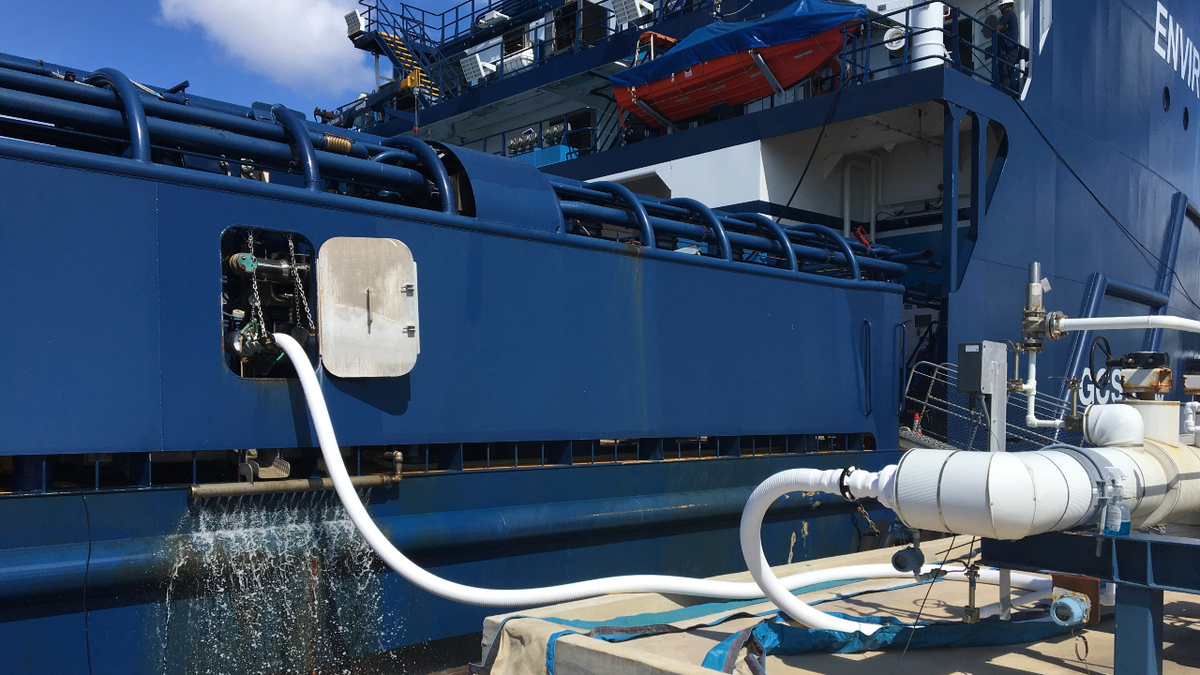
Most viable alternative fuel for sea going vessels…..
- Most viable alternative fuel for sea going vessels….….
In addressing the most pressing issue of global warming and keeping the global temperature well below 2C target, the shift is happening in reducing the use of fossil fuel to the alternative fuels, which emit low greenhouse gases (GHG). Therefore, the alternative fuels are the key relevant area of technological development for sustainable transport.
To contribute their part and making shipping sustainable, IMO’s strict regulation on cutting SOx emission came into force on 1 January 2020. The rule limits the sulphur in the fuel oil used on board ships operating outside designated emission control areas to 0.50% mm (mass by mass). The designated emission control areas (Baltic Sea, North Sea, North American, United States and Caribbean Sea) are already following much stricter limit of 0.1% sulphur in heavy fuel oil since 2015.
However, the use of low sulphur heavy fuel does not change CO2 emission. The research recently submitted to the IMO by Germany and Finland confirms that the overall effect of burning LSFO is environmentally negative. The paper details the results from controlled burnings of various marine fuels, and blended LSFO showed a marked increase in black carbon emissions (Pacific green group).
Therefore, the use of low sulphur fuel is inadequate in achieving the IMO’s goal to reduce Green House Gas (GHG) emissions from the ships by more than 40% in 2030 and by 70% in 2050 compared to 2008 (IMO).
Alternative fuels for shipping as reported on the European Alternative Fuels Observatory (EAFO) portal are; Liquefied natural gas (LNG), Electric drive by batteries, Hydrogen, Biofuels, Methanol, Dimethyl ether (DME) and LPG.
There are reports on technological developments and lot of demonstration projects are taking place for the adoption of using alternative fuels e.g., Biofuels, Electric batteries, Methanol, Ammonia, Hydrogen, Windsail, LNG and LPG. The use of most of these alternative fuels is mainly limited to coastal and domestic vessels except the LNG, which is used by the sea going vessels (DNV).
LNG carriers where most carriers use dual fuel diesel engines capable of using any combination of LNG and bunker fuels, using the LNG cargo boil off for fuel. The use of LNG as an alternative fuel is now expanding to other type of ships as well.
And the reasons for this are; the shipping industry is dealing with commercial LNG ships since 1964 (LNG Industry). Natural gas is widely available and burns much cleaner than petroleum-based fuels. LNG is more competitively priced than low sulphur heavy fuel. It also reduces fuel cost by 24% (Sea LNG).
Further, LNG reduces NOx emissions by 80% and can reduce GHG emissions by 23% (DNV) and the infrastructure for LNG bunkering is continuing and rapidly improving in comparison to other alternative fuels (Watson Farley & William)
Although LNG fuel has a low environmental impact, the production process of natural gas can cause significant emission of methane, which is a powerful greenhouse gas. Also, it is posing a significant challenge to ship design with additional costs of;
- Installation of engines that can use LNG fuel
- Capital investment in equipment other than engine- need fuel tanks 2 to 3 times larger than the conventional tank size and re-liquification equipment
- Cost of new construction is 15-30% higher compared to conventional fuelled vessel (MOL)
Comparing above advantages and disadvantages the argument can be made, though there is a reduction of emissions in GHG if LNG is used as an alternative fuel, the production process of LNG is not free from the emissions of methane, which is a powerful GHG. Then the question arises, why to use LNG as an alternative fuel? The answer to this question requires a new set of data to analyse and to determine the net GHG emission reduction when LNG is used as an alternative fuel, which is beyond the scope of this article and the publications referred in writing this article.
Having mentioned that the availability of LNG, cost benefit of running the ship, development for LNG bunkering comparing other alternative fuels, and the reduction of GHG, LNG is an attractive and the most viable alternative fuel for the commercial shipping today.
By: Munish Bhardwaj, Director, Solent Marine Consultants
Reference & Bibliography:
Blog on lng as a ship fuel by Mol services, available on;
https://www.mol-service.com/blog/lng-as-ships-fuel; accessed 17.12.2021
IMO Media Centre on Sulphur regulations, available on; https://www.imo.org/en/MediaCentre/HotTopics/Pages/Sulphur-2020.aspx; accessed 17.12.2021
Article on low sulphur fuels by Pacific Green Group, available on; https://www.pacificgreen-group.com/articles/study-confirms-low-sulphur-fuels-are-greenhouse-gas-timebomb; accessed 18.12.2021
European Alternative Fuel Observatory, available on; https://www.eafo.eu/alternative-fuels/overview; accessed 17.12.2021
Article Alternative Fuels, What does The Future Hold for Shipping, dated 12th May 2021, available on; https://www.wfw.com/articles/alternative-fuels-what-does-the-future-hold-for-shipping/; accessed 18.12.2021
Article on LNG Industry, available on; https://www.lngindustry.com/lngshipping/19062014/first_lng_carrier_entered_service_50_years_ago_802/ accessed 19.12.21
LNG as a Marine fuel by DNV, available on; https://www.dnv.com/maritime/insights/topics/lng-as-marine-fuel/index.html; accessed 18.12.2021
LNG As A Marine Fuel by Sea Lng, available on; https://sealng.org/wpcontent/uploads/2020/04/190123_SEALNG_InvestmentCase_DESIGN_FINAL.pdf, accessed 18.12.2021






